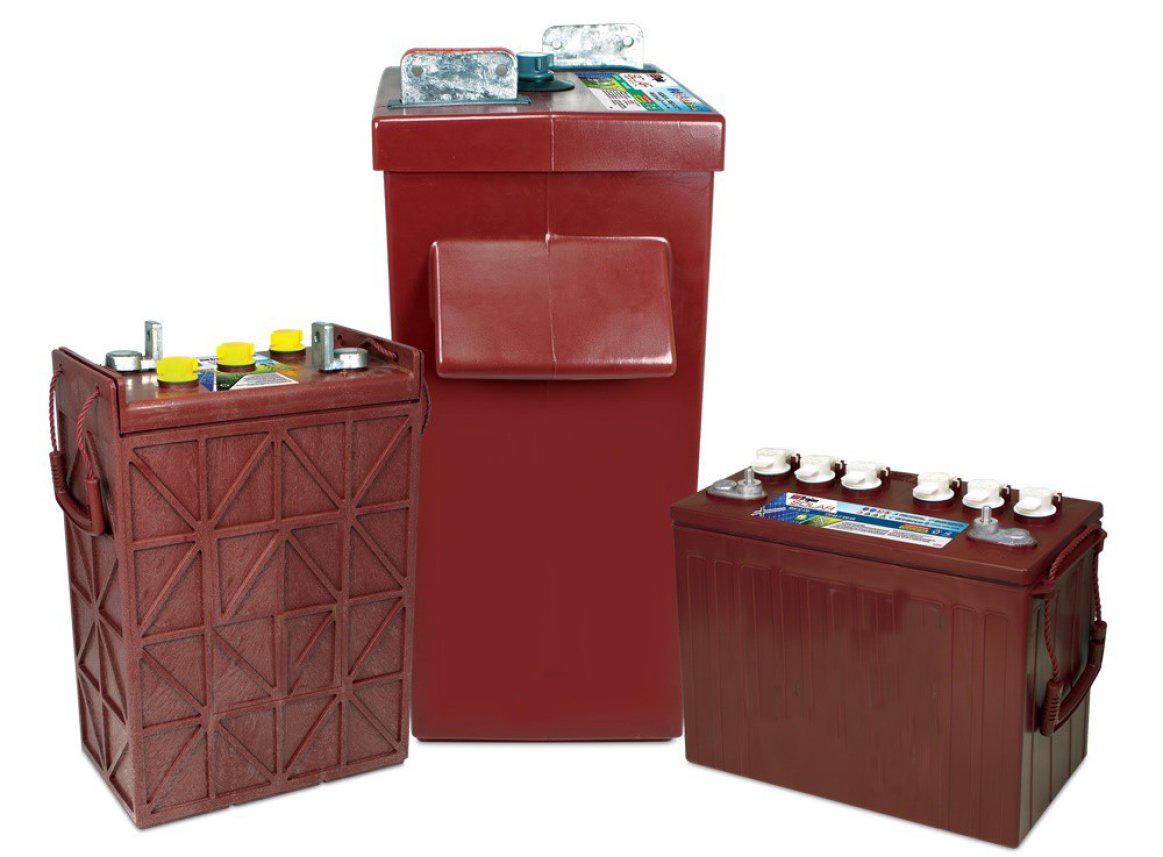
We have discussed the sizing of a battery bank and selecting a battery that is appropriate for the application, now we will take a look at the economics of battery ownership. To understand the true cost of operating your system, you will need to determine the battery bank “Cost per Cycle” amount.
To better understand this, think of your fuel cost on your vehicle per mile. If your vehicle gets 20 Miles per Gallon (MPG) and you pay $2.00 for a gallon of fuel, your fuel cost per mile is $0.10. This fuel cost per mile is the same as the Cost per Cycle of your battery bank.
In this article, we will look at three different types of battery technology and come up with a cost comparison that shows the true cost over time of each type.
The formula we are using is: Cost of the Battery Bank / # of Cycles = Cost per Cycle.
To calculate the Cost per Cycle, we will need an energy profile, in order to appropriately determine the size of the battery bank and the # of cycles. The example we will use is a small home in West Virginia. The home’s energy load is consistent. This home does not have AC. The heating is wood and in-floor LP heat. The domestic hot water (DHW) is also LP. The daily average use based on the previous 12 months is 14 kWh’s.
The first battery we will look at is a Flooded Lead Acid (FLA) battery. The parameters for a flooded lead acid battery can vary depending on what you purchase. For this example, let's say I choose a 220Ah (@C20) rated battery with 1,150 cycles at 50% Depth of Discharge (DOD).
Our load for the small home is 14,000 watts per day / 48vdc (battery bank voltage) = 292AH @ 48vdc.
292AH / .5 (50% DOD recommended by manufacturer) = 584AH @48vdc /per day
584AH x 2 (2 days autonomy) = 1168 AH @ 48vdc.
1168 AH / 220 AH = 5.3 Battery strings: so 6 strings of 4 (12v in series) batteries (24 batteries total).
MSRP (Estimate) $219.95 x 24 = $5,278.80
$5,278.80 / 1,150 cycles = $4.59 / per cycle
Obviously, the final solution will slightly vary based on changes to the key variables including, MSRP, DOD of battery, and the number of cycles. But using this formula and method you can calculate the Cost per Cycle for any battery bank and any type of battery.
The second battery we will look at is an Absorbed Glass Mat (AGM) battery. Let's say the battery is a 216 AH (@C20) rated battery with 2,050 cycles at 50% DOD.
Again, our load is 14,000 watts / 48vdc = 292 AH @ 48vdc
292 AH / .5 (50% DOD) = 584AH @ 48vdc / per day
584 AH x 2 (2 days autonomy) = 1168 AH @ 48vdc
1168AH / 216 AH = 5.4 battery strings: so 6 strings of 4 (12v in series) batteries (24 batteries total)
MSRP (Estimate) $450.00 x 24 = $10,800.00
$10,800.00 / 2,050 cycles = $5.27 / per cycle
The third battery we will look at is a Lithium Iron Phosphate (LIF). Similar to the FLA and AGM example the parameters by which we are judging this equation vary, depending on the product we are working with. The parameters for this example are a 3.8 kWh 48vdc battery rated for 10,000 cycles at 80% DOD.
Our load is 14,000 watts / 3,800 watts = 3.68 batteries @ 100% DOD
3.68 / .8 (80% DOD) = 4.6 batteries; so 5 batteries
MSRP $ 2,690.00 x 5 = $13,450.00
$13,450.00 / 10,000 cycles = $1.35 / per cycle
So what does this really mean?
The LIF battery, cycling 1 x 80% DOD cycle per day, will last 27.4 years With a total cost of $13,450.00 over the lifetime of the storage system.
The FLA battery, cycling 1 x 50% DOD cycle per day, will last 3.15 years. This battery bank selection would use 9 sets of 24 batteries to equal the same lifespan of the LIF batteries and would cost $47,509.20 over the lifetime of the storage system.
The AGM Battery cycling 1 x 50% DOD cycle per day will last 5.6 years. This battery bank selection would use 5 sets of 24 batteries to reach the 27.4 years that the Lithium Iron Phosphate battery did and would cost $54,000.00 over the lifetime of the storage system.
The cost above exclusively represents the cost of the batteries. It does not include labor and any lugs or cables that may need replacing. Having an understanding of the costs to operate different types of batteries will help you make strong economic decisions for you and your customers. If you want to get a free energy storage proposal and provide your customers a customized storage proposal click here!
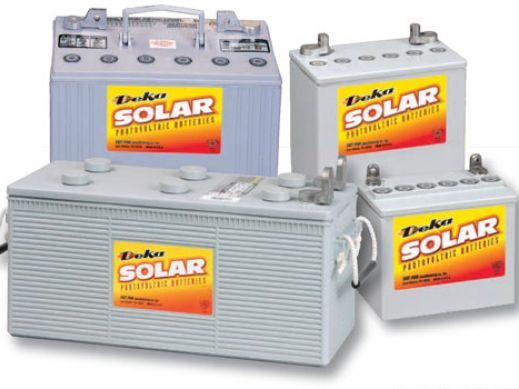
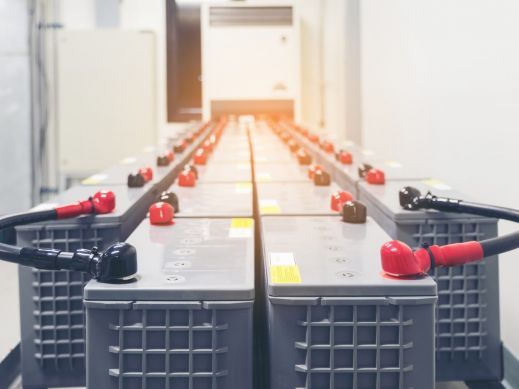
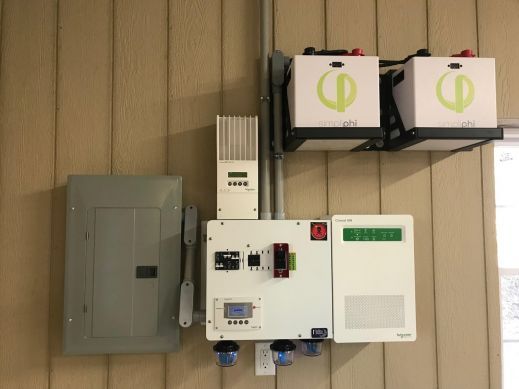
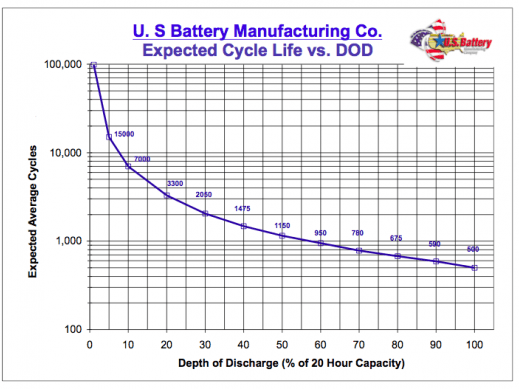
Comments
What are your thoughts on some of the alternative battery solutions, such as: Vanadium Redox Flow & Sodium Nickel Chloride (Zebra)? Is price and complexity of development still too much of a barrier to consider these types grow in market share?
Thank you for your comment. Here are Richard Henes' thoughts:
The Vanadium Redox Flow Amp batteries have some positive and negative points.
Positive (Pros) : Long Cycle Life (Up to 20,000 cycles), Voltage stability under heavy current draw
Negative (Cons) : Slow response time to sudden loads, cost/KWHR up to 30% higher than LFP batteries, require
sophisticated Energy Management systems to avoid over-charging / over discharging, expensive
for small system applications.
This technology at the current time is more cost effective for applications at grid scale and large industrial/ commercial applications.
Thank you.
For the LIF battery, you forgot to factor in the 2 days autonomy, so this would double the cost listed. Still cheaper than FLA or AGM, though.